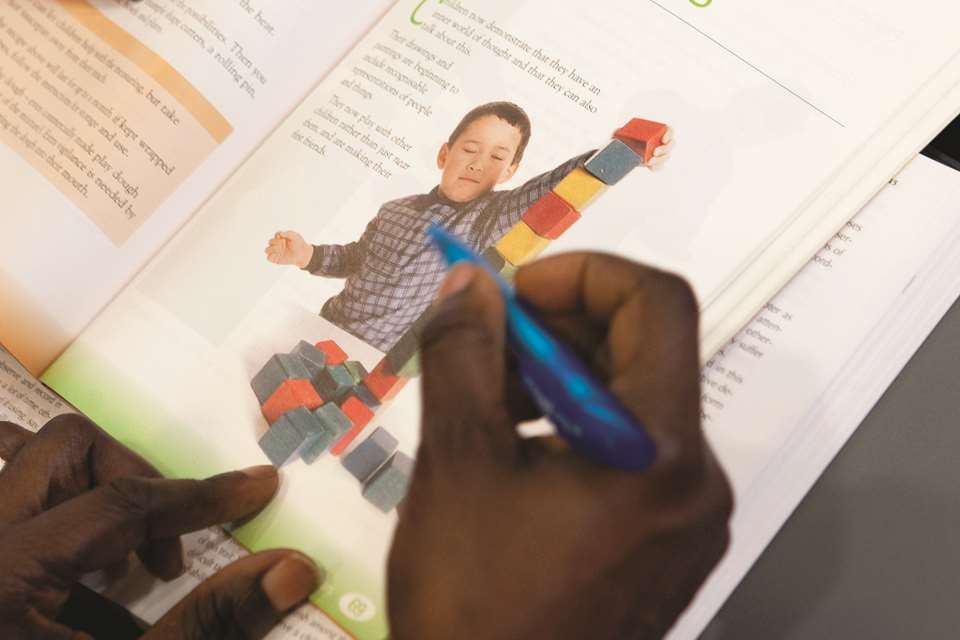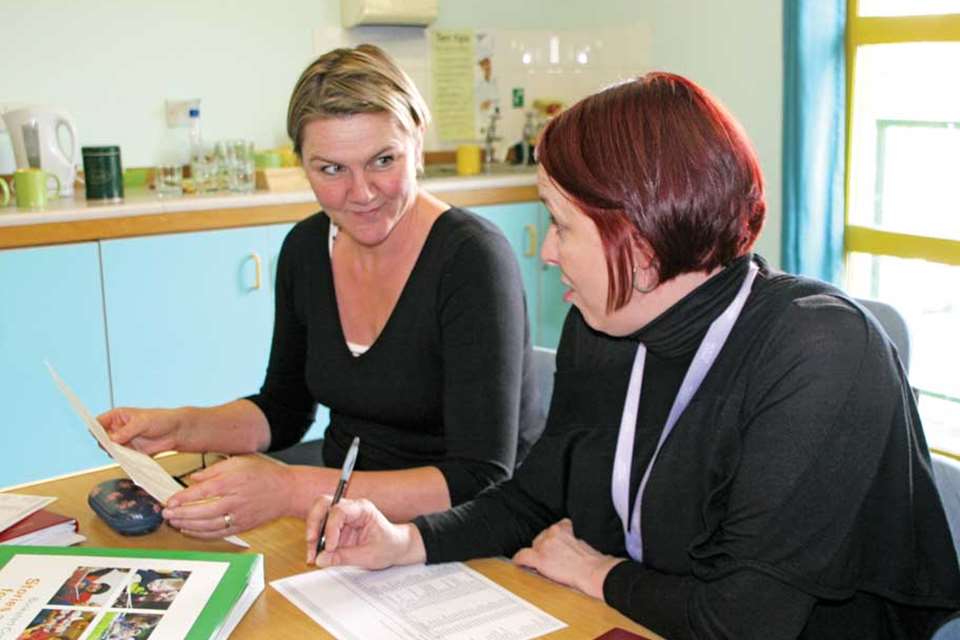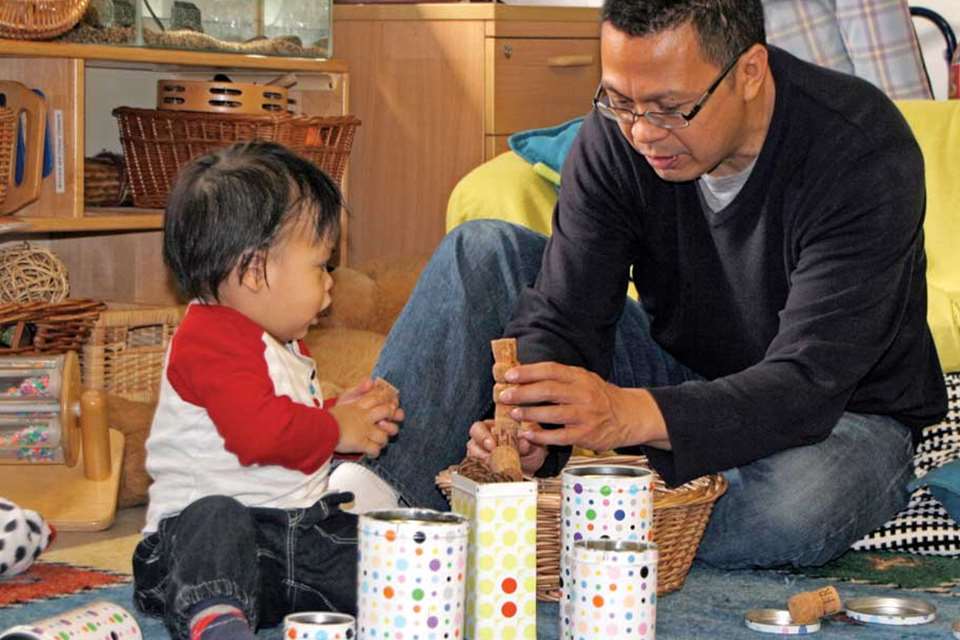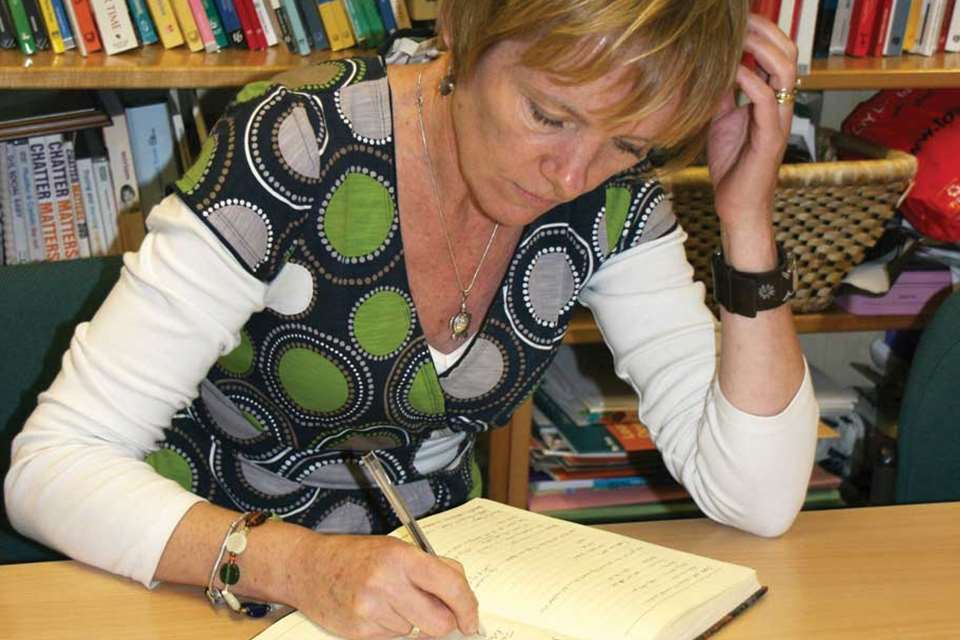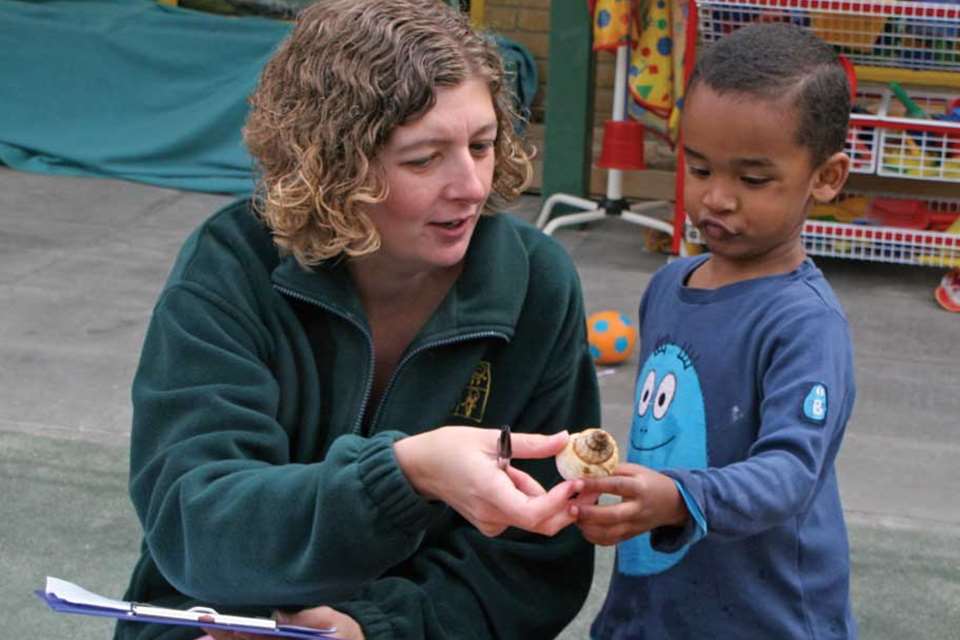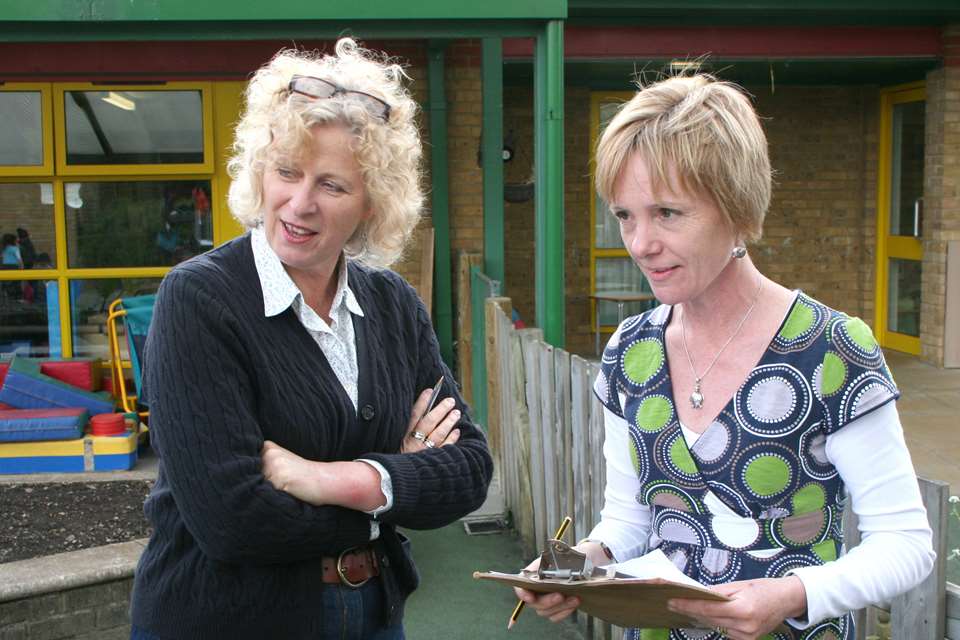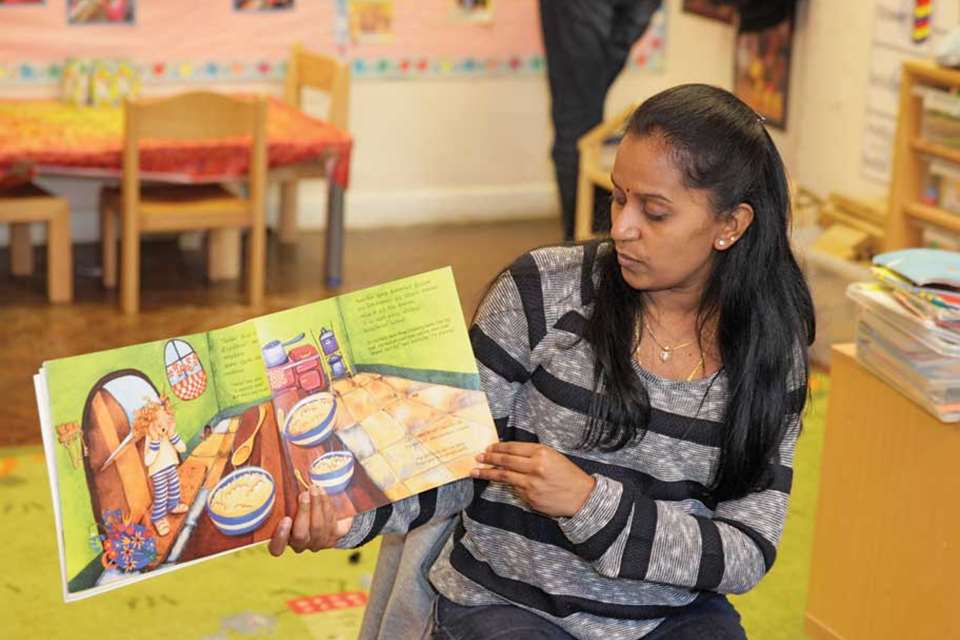Guide to EYE: part 10 - An alternative route to EYE
Gabriella Jozwiak
Monday, March 9, 2015
Steiner Waldorf now offers an Early Years Educator course at Level 4. Gabriella Jozwiak takes a look at what it involves, in the final part of our series on the new qualifications.

The Steiner method, based on the premise that a child's moral, spiritual and creative aspects need as much attention as his or her intellect, is playing a growing part in the alternative childcare scene. As with Montessori, Steiner's new qualification paves the way for more alternatively qualified practitioners to enter wider early education while retaining the statutory Early Years Educator (EYE) bedrock.
Like Montessori's EYE, Steiner's two-year Level 4 Diploma in Steiner Waldorf Early Childhood Studies (EYE) is offered by awarding body CACHE and has been developed with educational charity Crossfields Institute. Both also offer the course to students aged from 18, at Level 4 (Montessori has also developed a Level 3). And both are developing follow-on Level 5 courses. But unlike Montessori, these are not Steiner's first accredited Level 4 and Level 5 qualifications, as they replace existing Edexcel Early Childhood Studies diplomas.
As a result, London Steiner Waldorf early childhood studies course leader Lynne Oldfield says embedding the EYE into the existing qualification was a 'smooth transition'. It was necessary because of the changes to ratio regulations, which require all practitioners who train from 1 September 2014 to hold a qualification meeting EYE criteria. This allows Steiner to continue its practice of putting Level 4 graduates into Level 5 on-the-job training. 'Our students go into Level 5 in the third year and now - to be counted in-ratio while they're doing that - they have to have the EYE already,' she explains. Steiner's Level 5 course is a one-year, full-time placement in a Steiner kindergarten for which students are usually paid.
The Level 4 EYE is delivered from two training centres in London and York. Students study part-time for two years over approximately 960 hours. Students travel to a centre for one weekend a month for seminars. They also attend weekly two-hour study groups in their local area.
In addition, they complete two residential courses in each year, and a minimum of 100 placement hours in a local Steiner setting (Montessori requires 400). Ms Oldfield says that because of the course's strong emphasis on self-development, online learning is not included and all teaching is delivered one-to-one.
Currently, 25 students are studying the EYE in London and 12 in York. Over the course's duration, they will complete 16 mandatory units assessed through 14 essays and some in-placement assessment. They will also compile two portfolios of evidence assessed internally. Like the Montessori qualification, there are no exams.
Ms Oldfield says a typical Steiner student is usually aged between 25 and 45 and already holds a degree, although this is not a requirement. However, they must have minimum grade C English and maths to gain the EYE. 'A lot of them are mothers coming back into work and this is a change of direction - they have all types of degrees,' says Ms Oldfield, commenting on the London cohort.
In York, north of England Steiner Waldorf early childhood course co-ordinator Jill Taplin says some students already hold education qualifications but are dissatisfied with mainstream teaching practices. 'We have a couple of primary school teachers and people in mainstream nurseries,' she says. 'They're looking for something they see as more wholesome.' Ms Taplin also says that former Steiner pupils return to learn more of the theory under which they were educated.
The Steiner approach to teaching emphasises two aspects: child development and self-development of the teacher. For this reason, the EYE includes three units focusing on the arts, distinguishing it from other EYE courses. Units 13, 14 and 15 cover performance art, two-dimensional art and art and craft. 'Almost half of the Level 4 course is this kind of activity aimed at self-development of the learner, and they're all assessed,' says Ms Oldfield.
Steiner teachers deliver teaching grounded in the belief literacy and numeracy skills are developed through an environment of hands-on activity and play. Steiner does not include formal reading, writing and arithmetic teaching, as the organisation believes children learn this more effectively through having time to develop socially, emotionally and physically.
For this reason, Steiner early years is set up to send children onto primary school at age seven. To ensure Steiner children do not, therefore, perform badly in Early Years Foundation Stage (EYFS) profiles, its kindergartens are exempt from parts of the EYFS learning and development requirements and assessment arrangements. 'Because we teach the EYE, our students are aware of the literacy and numeracy goals and the way the Government would like them to be taught,' explains Ms Taplin. 'But we don't do that.'
After completing the EYE, students can work at assistant level in a Steiner setting. After Level 5 they qualify as a group leader. Steiner has 36 registered early years settings in the UK, but this number is set to rise. The group has applications pending to open four free schools - all of which will offer early years provision and require staff.
Alternatively, learners can take the qualification to a different nursery. Ms Oldfield hopes this will be one outcome of offering the EYE. 'We're very happy to work with CACHE because it is so high profile in the early years - it will allow our students to go into mainstream,' she says. 'I really welcome students who tell me they work in mainstream but they want to become familiar with the Steiner approach because they want to integrate it.'
EMPLOYER'S VIEW: TRICIA WELLINGS, BRIGHT KIDS NURSERIES
Tricia Wellings is the chief executive at Bright Kids Nurseries. 'It's great to see Steiner offering an EYE, and reassuring it's offered through CACHE,' she says. 'However, it's been constructed quite differently to other EYEs because it's offered at Level 4, yet this only gives the student the level of assistant in practice. With other EYEs you become a full practitioner if you have the required GCSE results.
'Level 5 Steiner students have to do a one-year placement. But at Level 4 learners are only required to do a minimum of 100 hours placement. What concerns me is somebody could do a Steiner Level 4 and transfer into mainstream having only 100 hours of in-house training. That's much lower than other EYE courses, which ask for 300 to 400 hours.
'I can see how it works within Steiner, but if an 18-year-old applied to work for us with this qualification, as an employer I would be concerned they may not have enough practical experience. The point of the EYE is to bring back that practical and theoretical learning we used to see in the former National Nursery Examination Board qualification. I see that as a drawback.
'I also wonder if this qualification is as broad as other EYE courses. The unit titles are all focused on Steiner Waldorf. They might narrow learning and perhaps there is less focus on the EYFS, which is critical today.
'However, it's interesting that Steiner is delivering this at a Level 4. There's a real gap in the early years training for Level 4 and Level 5 courses. This course could be a good option for someone with practice experience wanting to take a next step.'
BREAKDOWN OF COURSE UNITS
The units for the Diploma in Steiner Waldorf Early Childhood Studies are:
- Steiner Waldorf Concept of Child Development: Birth to 3
- Steiner Waldorf Concept of Child Development: 3 to 5 Years
- Steiner Waldorf Concept of Child Development: 5 to 7
- Steiner Waldorf Early Childhood Education in the context of the Steiner Waldorf Pedagogical Approach
- Steiner Waldorf Early Childhood Curriculum Activities
- Steiner Waldorf Early Childhood Teaching Skills in Principle
- Working in Partnership with Others in a Steiner Waldorf Setting
- Introduction to Rudolf Steiner's Life and Ideas
- Current Trends in Early Childhood Education
- Anti-discriminatory and Inclusive Practices in the Steiner Waldorf Early Years Setting
- Welfare Requirements in the Steiner Waldorf Early Years Setting
- Principles and Practices of Inspection in a Steiner Waldorf Early Years Setting
- Performance Art in a Steiner Waldorf Early Years Setting
- Two-Dimensional Art in a Steiner Waldorf Early Childhood Setting
- Art and Craft in a Steiner Waldorf Early Childhood Setting
- Steiner Waldorf Early Childhood Teaching Skills in Practice.



